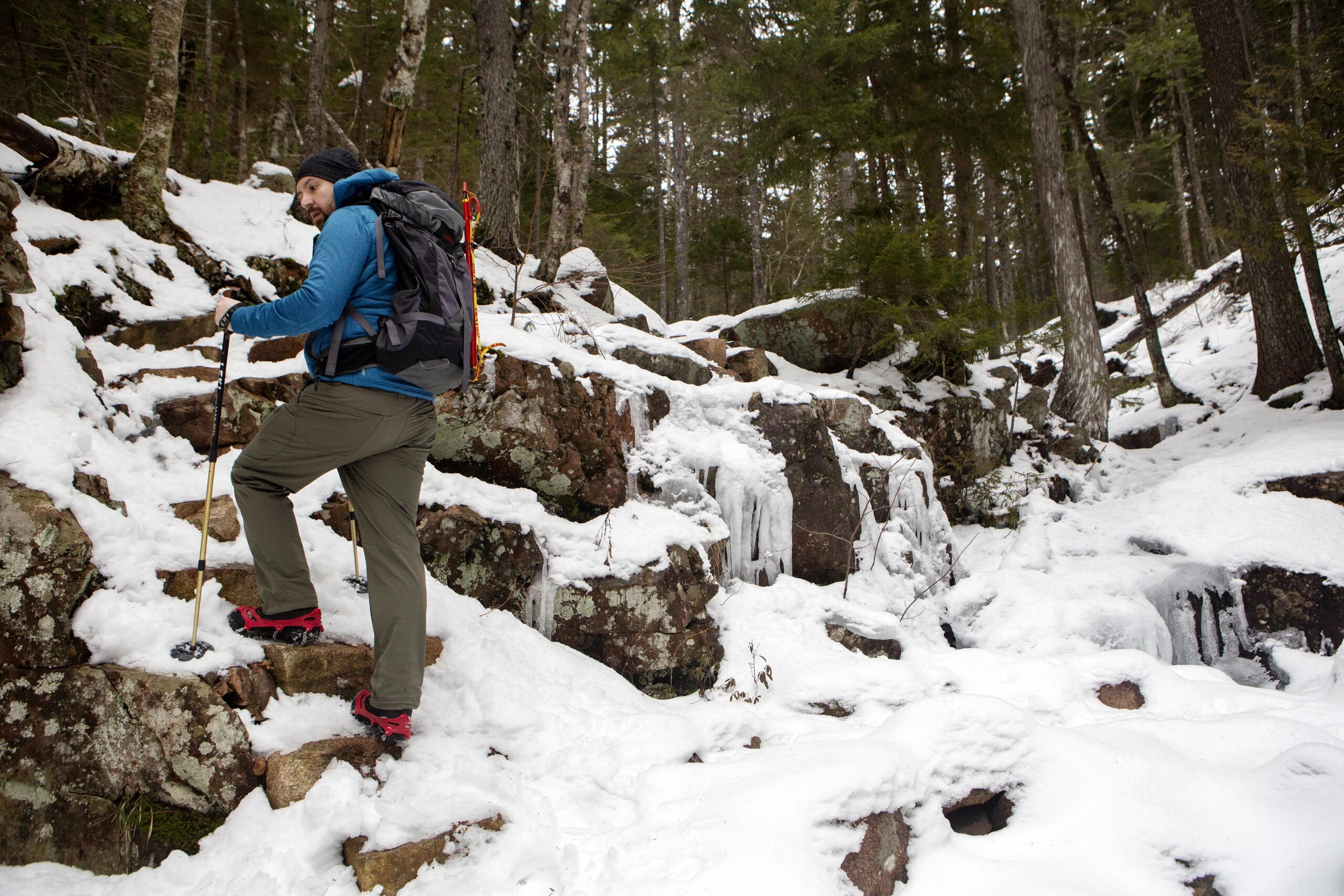Enjoying Acadia In Winter Requires Special Preparedness
February 26th, 2022
February 26th, 2022
BY JULIA WALKER THOMAS
Winter is arguably one of the most beautiful seasons in Acadia. Going into the park on a “bluebird day” with the sun shining after a fresh snowfall feels like stepping into a magical crystalline wonderland.
But with this incredible beauty also comes increased risk. Navigating the park’s trails and granite mountaintops when they are covered with ice and snow is more dangerous than doing so in the summer, and it requires special preparedness.
Ice, snow, and freeze-thaw-freeze cycles mean changes can happen daily or even hourly. Ice can behave differently depending on the type and temperature. Soft ice with temperatures in the upper 20s behaves much differently than sharp hard ice in the single digits and that requires distinct types of footwear and traction-control devices. Snow adds even more complexity by masking trail challenges.
As Acadia’s visitation hits record levels, an increasing number of visitors are coming to enjoy the park in the shoulder seasons and winter. Unfortunately, this equates to a greater number of emergencies requiring rescue.

Nick Verrow, of Brewer, Maine, navigates the snowy Maple Spring Trial up Sargent Mountian. (Photo by Ashley L. Conti/Friends of Acadia)
According to Acadia National Park’s Chief Ranger Thérèse Picard, all rescues in the park are physically taxing, dangerous, and require 10 to 30 rescuers, depending on the location, complexity, and length of the rescue. Winter weather and ice add layers of complications: cold temperatures, less daylight to work in, and uncertain terrain.
Because of these factors, search and rescue teams must move more slowly and use more technical techniques, resulting in rescues taking longer, increasing exposure risks for everyone.
“Being prepared and having ALL of the essentials in case something happens is the best you can do to enjoy the park safely in the winter,” Picard explained.
Help protect yourself, park staff, and volunteers by being as prepared as possible when heading out to enjoy Acadia in winter.
When you head into the park in the winter, it’s always wise to check the latest forecast and current conditions. The park website at nps.gov/acadia is the best resource for the latest conditions and closures. Visitors must also have a park entrance pass year-round. Most importantly, the National Park Service recommends bringing “10 essentials,” which are modified to better suit visitors to Acadia:
Topographical Map and Compass (cell phones often don’t work in the park)
Sun Protection for your skin and eyes
Layers and Insulating Clothing, including a jacket, hat, gloves, rain shell, thermal underwear, and extra layers in your pack. Always bring a pair of micro spikes or crampons and hiking poles to help prevent falls on ice
Headlamp and Extra Batteries
First Aid Kit
Basic Repair Kit with cut tape, knife, screwdriver, and scissors
Food—pack an extra day’s supply of food
Water and Water-treatment Supplies
Emergency Shelter—emergency blanket and tarp/fly
Leave a Plan—leave your exact route with a friend and check in with them before and after your trip.
JULIA WALKER THOMAS is Friends of Acadia’s Digital Media Manager